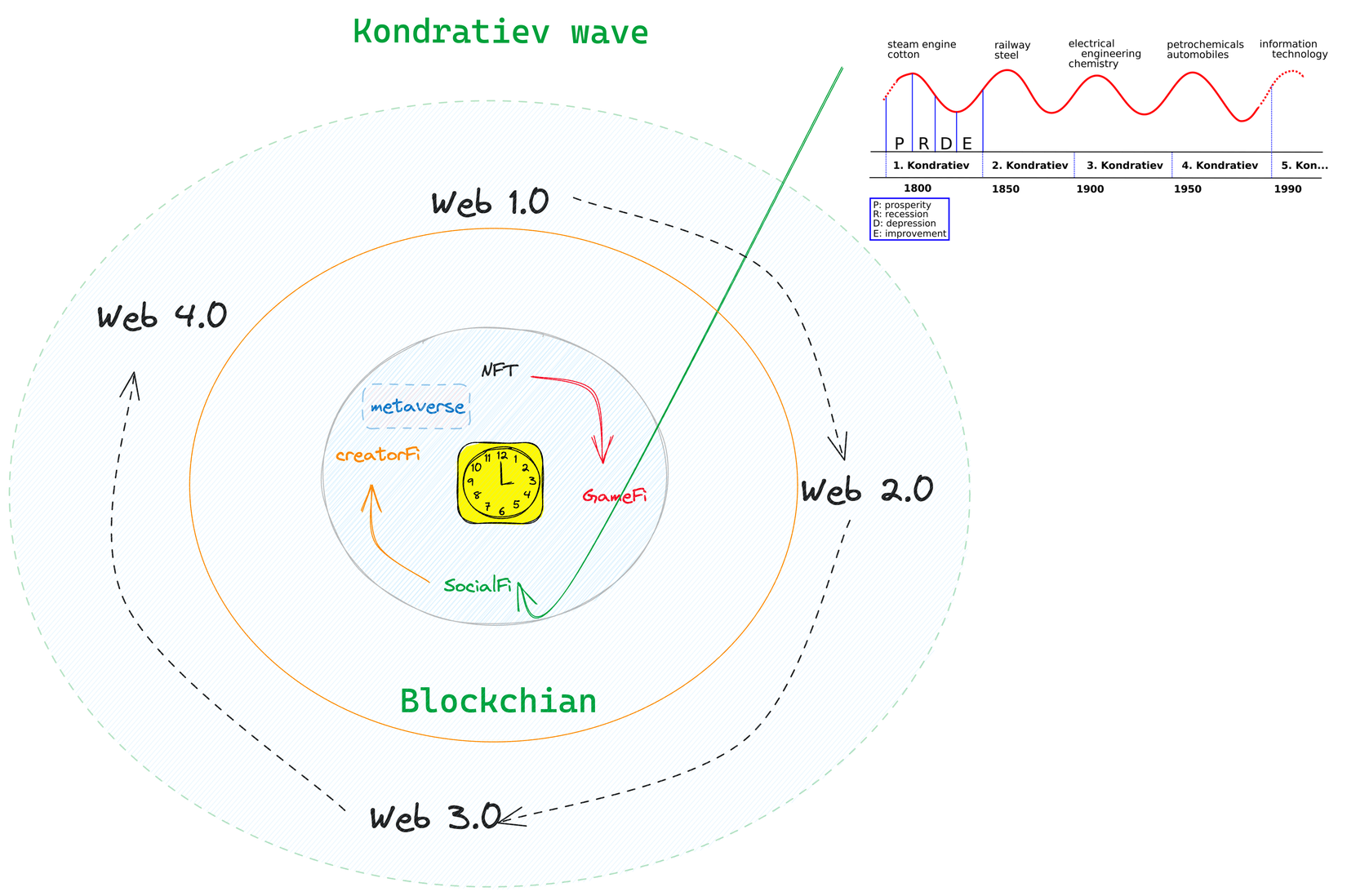
Web3 is accelerating, and Arweave, as the infrastructure, will be adopted by more developers, creating a new and more diverse ecosystem. PermaDAO has been established as a community of co-builders for this purpose. Everyone involved can find their role here to contribute to the Arweave ecosystem. Any proposals and tasks related to Arweave can be published here and receive support and feedback from the entire community. Join PermaDAO and build Web3!
Author: Spike @ Contributor of PermaDAO
Reviewed by: Kyle @ Contributor of PermaDAO
Rethinking Web3 Creator Economy: From Metaverse to UDL
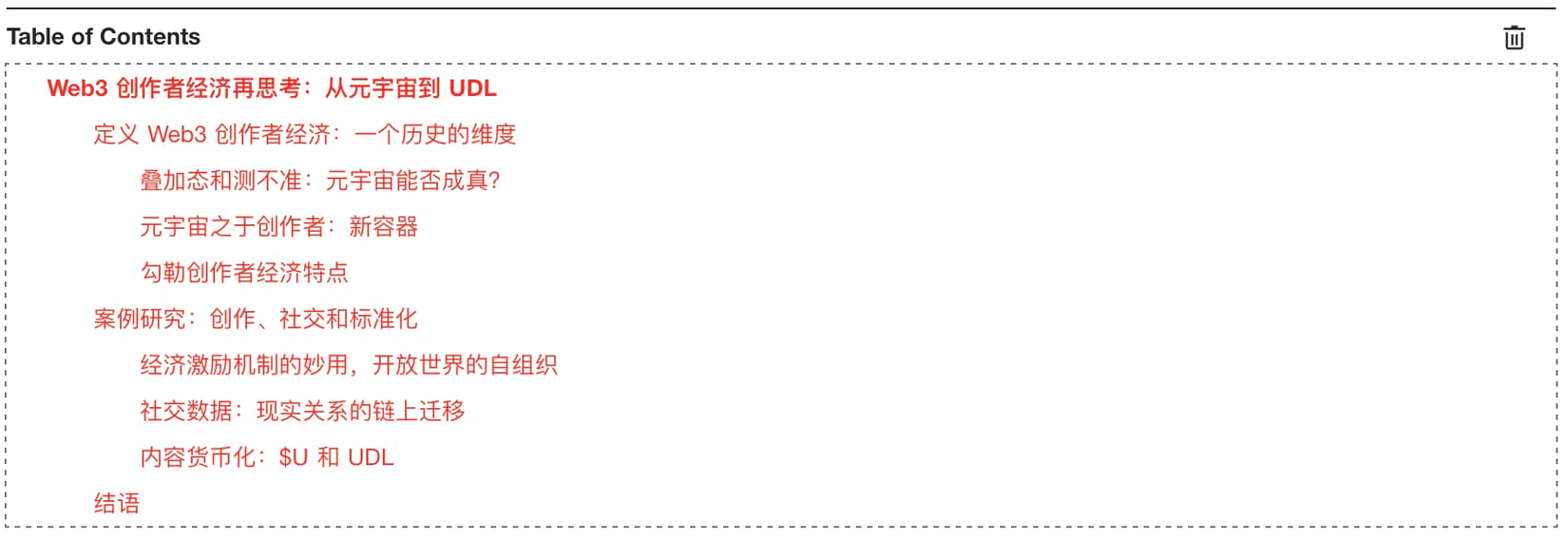
Defining Web3 Creator Economy: A Dimension of History
Currently, the state of the Web3 creator economy is not performing well. Whether it's NFTs, GameFi, social media, or other attempts, they are all in a silent period, and Azuki's reckless behavior has even dealt a heavy blow to the entire NFT track and creator economy.
However, looking at the entire industry development cycle, the current Web3 creator economy is still in its very early stages. This is not just an empty slogan, but an experiential language derived from comparing the development cycle of the internet creator economy.
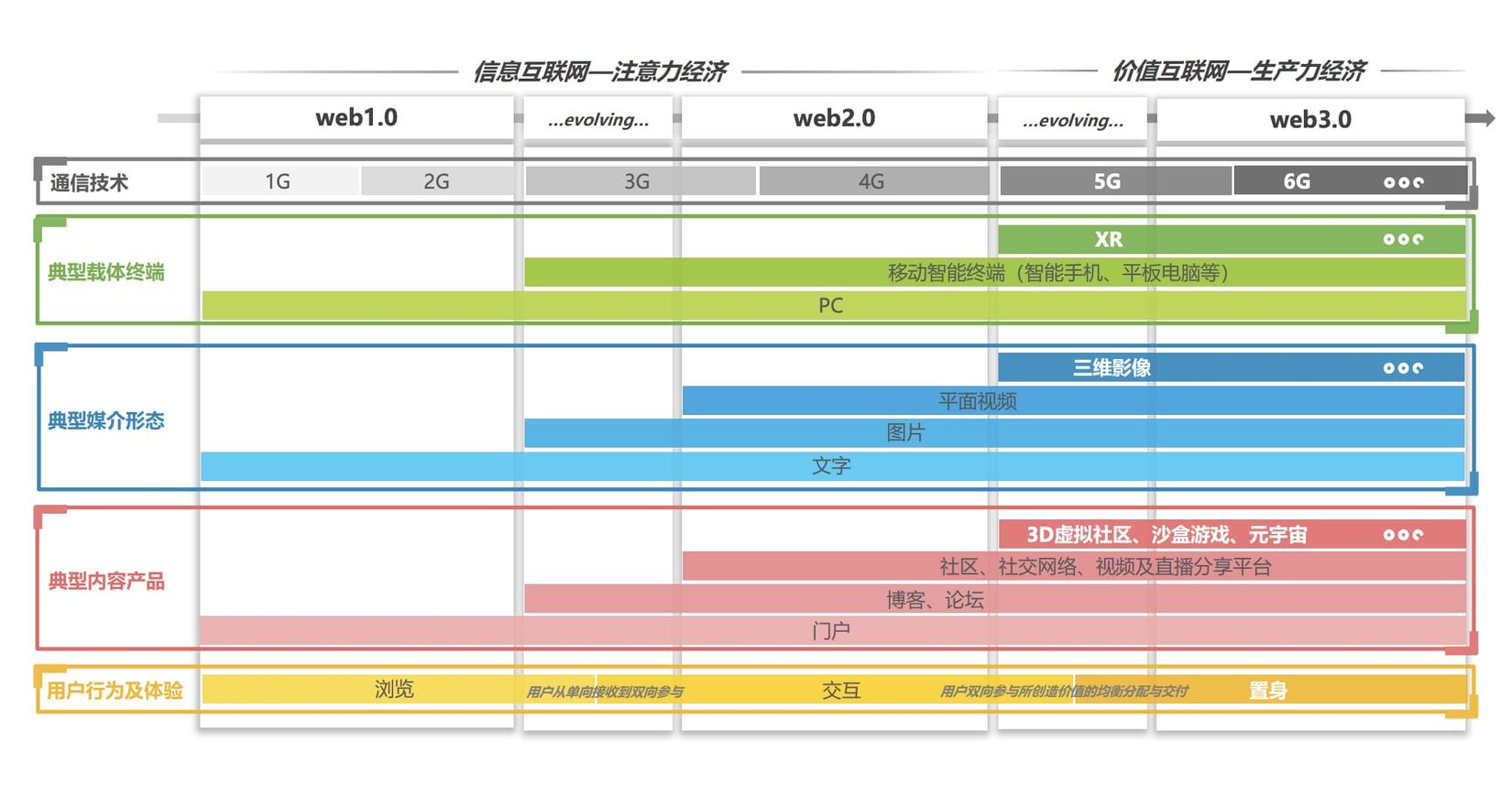
Image Description: Overview of the development stages of the internet content market
Image Source: https://www.wondershare.cn/document/2022-economic-white-paper-of-Internet-creators.pdf
If we say that in the current stage of Web3, there is an awkward situation where there are more creators than users and more speculators than audiences, then in the early stages of the internet, the situation was similar. The high cost of internet access and electronic devices naturally excluded the participation rights of ordinary users. At that time, the internet was elitist, and they had a psychological aversion to using the internet as a channel for monetization.
However, as time progressed to the 1990s, the first internet boom in North America, in a sense, completed the initial user education. After the internet bubble burst at the turn of the millennium, everyone was soaked in the waves of the era. In the eastern world, the trend of going online also indicated that the initial elite group began to break away from the constraints of the system, and they subsequently accumulated their own capital, forming the basic structure of today's Chinese internet.
After that, in addition to the iPhone in the era of mobile internet and TikTok in the 5G era, the basic structure of the global internet was basically formed, and eventually, the super platforms monopolized everything, including basic content production forms and creator groups.
From images, text, short and long videos to music, and subsequent innovations, more changes were made to the production relations, such as blockchain breaking the platform monopoly, or AI helping people improve production efficiency, but the basic form tended to stabilize.
From this perspective, the Web3 creator economy can be defined as—under the blessing of blockchain technology, changing the current situation where creators' income is heavily deducted by platforms, and breaking the censorship of creators' content, giving creators creative freedom.
In fact, even within the Web3 creator economy system, there has been at least a rotation of sectors. For example, the initial NFT music market hoped to change the issue of centralized platform deductions, but NFTs did not fully play this role, and instead excelled in the speculation of "small images." Things are never perfect.
Superposition and Uncertainty: Can the Metaverse Come True?
From a more macro perspective, we are in a superposition of the Kondratiev wave and the small climate of internet development. Humanity has not had a fundamental scientific innovation for a long time, and everyone hopes for the realization of superconducting technology to break free from the current stock competition.
After experiencing the hunting-gathering society, agricultural society, and industrial society, entering the information society was the form of human society predicted by Alvin Toffler in "The Third Wave." Since the 1990s, the development of the internet has given us the illusion that we are already in it. From Web1.0 to Web2.0, we witnessed the tail dominance of the platform monopoly economy and the sensory deprivation of information cocoons on human perception.
The reason why the information society is still in the future is that the scale of the digital economy is not large enough, and industrial production capacity is still an important criterion for determining national competitiveness. "Information becomes the most important factor of production," as Toffler said, is still not a reality, at least not entirely.
The emergence of the concept of the Metaverse has the potential to truly trigger a change in the form of human society. According to the Kondratiev long wave cycle (which believes that there is a long-term fluctuation with a length of 48 to 60 years, averaging 50 years, in the process of capitalist economic development, generally understood as the result of collective human behavior), it is just the time for the vigorous development of computer technology after World War II.
Just after Meta's renaming, the craze for the Metaverse reached its peak, covering hardware such as VR, games, social media, and even blockchain technology and cryptocurrencies. In short, we see the embryonic form of a new business model that surpasses existing internet platforms, and this will fundamentally change the overall landscape of the creator economy.
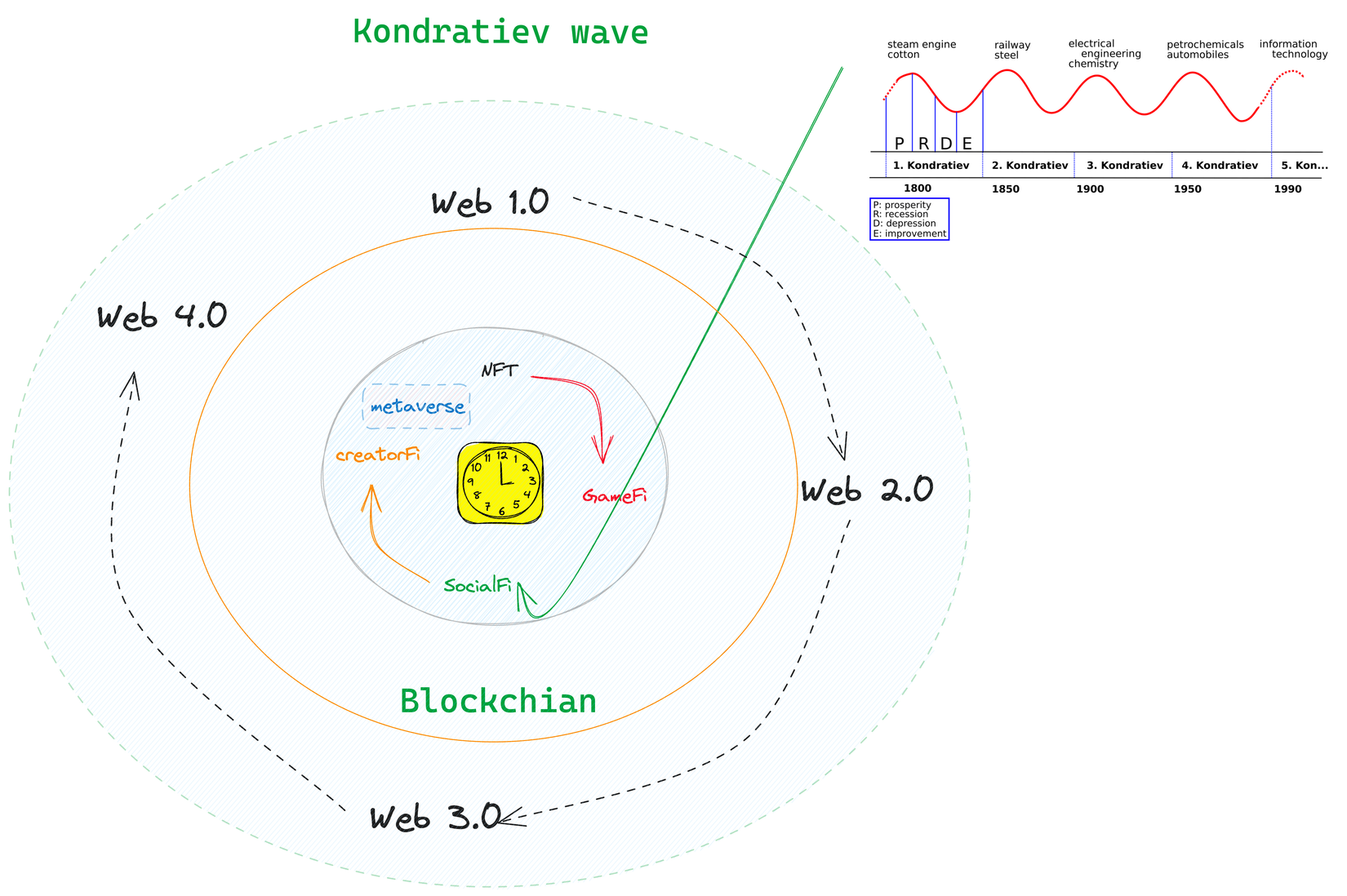
Image Description: Web3 Creator Economy Cycle
Image Source: Arweave SCP Ventures
The Metaverse for Creators: A New Container
Looking back at the origin of the concept of the Metaverse, it is generally mentioned that the science fiction novel "Snow Crash" introduced the "Metaverse," which is a virtual human living scene where enterprises and organizations are responsible for street construction, and individuals act as part of the economic system. The librarians can be seen as the role of AI NPCs, and the various architectural spaces can be seen as virtual land.
Inspired by this, Second Life was launched in 2003 and basically realized the fantasy in "Snow Crash," and even issued its own Linden Dollar for circulation within the game. There are currently 6,000 events held in it every day, and its GDP reached $500 million in 2015. From a gaming perspective, being able to exist for 17 years and still operate steadily is quite outstanding and successful.
However, compared to the newcomer Roblox, Second Life can only be said to have been born at the wrong time, as Roblox is the biggest contributor to pushing the concept of the Metaverse into the mainstream world. Roblox was founded in 2004, launched the game of the same name in 2006, and currently has nearly 40 million daily active users, with a peak concurrent user count of 5.7 million, and over 8 million developers.
In March 2021, Roblox for the first time included "Metaverse" in its IPO prospectus and defined eight elements of the Metaverse: Identity, Friends, Immersiveness, Low Friction, Variety, Anywhere, Economy, and Civility.
Roblox's biggest feature is that it maximizes the MOD (Modification) mode, providing an extremely customizable game editor and environment, allowing users to customize the way games are played and create their own world within it.
Technology is a natural product of human evolution. The elements defined by Roblox are ambiguous and more of a directional guide rather than a specific implementation path. We need to continue to refine the technical points.
Just like Bitcoin and blockchain, it is not the result of technological breakthroughs, but rather, similar to Watt's improvement of the steam engine, P2P, cryptocurrency, anonymous mechanisms, and PoW mechanisms all existed before, but it was only when Satoshi Nakamoto combined them to develop Bitcoin that a decentralized economic system was truly realized.
The Metaverse is the same. The technologies needed for the Metaverse—XR (VR/AR/MR), 5G, edge computing, and now including blockchain and NFTs—all exist, but the Metaverse truly encapsulates and integrates them into a unified concept.
- VR/AR: The entry and critical path of the Metaverse. Currently focused on visual and auditory fields, it will continue to progress in touch, temperature, and motion. The global market size of virtual reality technology was $12 billion in 2020, with China accounting for 55% of the market share. Currently, VR accounts for 68% of the market share, and AR accounts for 32%, with a total global shipment of 5.12 million units.
- 5G, WIFI6, cloud computing, edge computing: The link channel between people in the Metaverse, which will achieve ultra-high definition, dynamic rendering, preloading, and achieve a never-offline effect. According to a report by Huawei, only when the resolution of a single eye reaches 6K and the frame rate (FPS) reaches 90HZ, will humans overcome dizziness. At this time, a bandwidth of 1.4Gbps is required, and the ideal state is 16K@180FPS, but in 2020, the global penetration rate of 5G was only 10%, and the top 10 countries in terms of penetration rate only had a household internet speed of 200Mbps, which can only support 2K@90FPS.
- AI, visualization development kits, all-in-one development platforms: Reduce development difficulty, such as Nvidia's Omniverse all-in-one development platform.
Roblox consists of three parts.
- Roblox Studio: A modular game production engine for developers, where 1/5 of game players are developers, creating UGC content independently.
- Roblox Cloud: Deployed in 21 regions around the world with 21,000 servers, directly connected to each other, and capable of processing 12 million requests per second.
- Roblox Client: For users, including iOS, Android, PC, and Xbox, with the power of UGC, there are currently 20 million games available.
And in terms of user composition, it definitely leans towards young people and is able to attract users to engage in social interactions within it, completing the traffic loop.
- Age: 29% aged 9-12, only 15% aged 25 and above, 5-24 years old account for about 70% of DAU;
- Region: North America accounts for 32%;
- Devices: 72% on mobile;
- Gender: Balanced;
- Usage time: Single user daily usage time: 153 minutes;
- Social interaction: Average of 61 messages per day, compared to 50 messages on WhatsApp.
In terms of game development, it already has the ability to create popular and highly retained games, with Adopt Me! reaching a peak of 2 million online players. 0.9% of game playtime exceeds 10 million hours, and there are 1504 games with over 1 million hours of playtime. The top 10 games account for 37% of total game playtime, games ranked 10-100 account for 28% of playtime, and games ranked 100-1000 still account for 25% of playtime.
In terms of the economic model, it is heavily biased towards developers. In 2020, 0.5% of developer and creator income was over $10 million, mobile game revenue exceeded $1 billion, with a revenue split of 25% for the platform, 24.5% for developers, 26% for platform consumption costs, and 24.5% for Roblox. The company incurred a loss of $250 million in 2020, due to a rapid increase in developer revenue sharing. In Q1 2021, total developer earnings amounted to $120 million, with nearly 800 developers earning over $30,000. The company expects to share nearly $500 million with the community in 2021.
We can see that youth, economic incentives, social interaction, and open platforms are its four key success factors, and Roblox is the only platform that meets all four of these criteria.
From this perspective, I believe everyone can understand Meta's impulsiveness, as well as the popularity of MANA/SAND at the time. Land economics and virtual real estate are all imitations of Roblox, and this naturally extends to GameFi. We believe that this will change the current gaming landscape.
However, in 2023, nothing has changed.
For example, in the development of the Metaverse platform, the current problems are mainly focused on poor development reusability, high technical integration difficulty, and high costs.
- Apple, Huawei, and Microsoft have different standards, and Nvidia's Omniverse requires hardware support;
- At the hardware level, the chip market is dominated by Qualcomm, and the hardware devices (HoloLens, HTC, Oculus) are divided among three major players.
- At the system level, Facebook, Steam, and Sony have developed their own systems, and Huawei has independently developed an AR Engine.
- At the service level, there is no unified development and distribution platform, and each hardware operates independently.
- At the application level, it is divided into 2B/2C, with 2B being smart education and healthcare, and 2C being streaming media and games, with support for a limited number of games.
- Market share of hardware, content, software, and services: 37%, 36%, 19%, and 8%, but the overall market size is small. Facebook's Oculus Quest 2 is expected to reach 10 million units, but before that, it is difficult to achieve economies of scale, and costs remain high.
Outlining the Characteristics of the Creator Economy
The previous frenzy was not entirely without value. At the very least, we can deduce the characteristics that a successful creator economy platform should have from it.
- Open system and closed-loop economy: In a virtual world open to everyone, economic activities should be kept within the system as much as possible. The mainstream world values its openness, and the current land grab by various platforms undoubtedly has strong appeal. The encrypted world hopes to use NFTs to achieve economic circulation.
- Virtual interaction and real emotions: Non-real contact behavior can trigger genuine human emotions. Further development of XR devices has the potential to replace real human contact.
- Asynchronous loading and synchronous presentation: Large-scale multiplayer collaboration and simultaneous online presence require massive network bandwidth, but interaction needs to be presented simultaneously. User device performance varies widely, so asynchronous loading and cloud rendering are needed, with local devices only responsible for presenting the results.
- Public platforms and private creation: New platforms must have public characteristics, built on a blockchain to avoid centralized management, but each "venue" and "street" carries specific scenes, typical UGC content.
To achieve the above points, it is not worthwhile to follow the old path again. At the very least, action rules need to be redefined, and the following points need to be considered in the design:
- Economic system: From B2C and C2C transaction forms to NFTization, to truly achieve decentralized economic system operation, at least reducing channel commission shares;
- Operating foundation: From centralized internet platforms to blockchain platforms, to achieve decentralized data storage, aiming for "one login, running across the entire network," while protecting personal privacy and breaking the current internet isolation.
- Short-term: The encrypted economy needs the creator community to complete a new round of user education, and creators also need the encrypted economy to help them escape platform exploitation.
- Medium to long-term: Achieving blockchain as the on-chain operating foundation of the creator economy, achieving personal data control. Only when the underlying infrastructure architecture is on the blockchain can the issue of platform monopoly be avoided.
As of now, we have outlined the basics of the Web3 creator economy. In the following sections, we will analyze three typical cases, all based on solutions from Arweave, and have been running steadily for a long time without being too affected by market conditions. We believe that these practices will become the model and example for the future Web3 creator economy, completing the reform of the existing creator system.
Case Studies: Creation, Social Interaction, and Standardization
With the advancement of computer technology, the objects that people can create are no longer limited to text, and the barriers to entry for games, music, and videos are decreasing. The creator community is also becoming more mainstream, erasing the elitist nature of the early internet and democratizing the right to create.
In the social stage, there is a new change, which we can call the migration of the on-chain data production paradigm—from DeFi data to social data. While social data is a rich mine waiting to be explored, its direct economic value is not as high as DeFi. Therefore, storage-based public chains like Arweave are the most suitable place to accommodate it.
Finally, Arweave has proposed UDL (Unified Data Standard), hoping to standardize the format of future on-chain data, creating a universal standard similar to URL for creation, truly unleashing the potential of creators, and solving creators' worries from a technical perspective.
The Ingenious Use of Economic Incentive Mechanisms, and the Self-Organization of Open Worlds
"Second creation" is not a new concept. At least in the 1980s, a RPG game called "Ultima" provided players with an open world map, and the more complete "Elite" in 1983 allowed players to play as astronauts piloting spaceships, traveling through the universe, and completing various tasks, where player behavior began to affect the game ecosystem.
Currently, game "second creation" can be divided into five types: second creation, MOD, homestead, sandbox, and UGC.
However, there is a problem here, and this is where the irreplaceable value anchor of the encrypted economy in the Metaverse lies. The self-organization of UGC content production. The main problem with previous UGC content was the unstable profit expectations and unclear ownership, such as Blizzard's acquisition of the rights to "Warcraft 3" MOD.
Introducing the NFT economic incentive model will clarify the copyright and value transmission mechanism, and the ownership of game items obtained by players will be clear and tradable, and can be stored. There will be no issue of copyright infringement in second creation, and players can develop their own gameplay within more developed games, with clear earnings. There will be no high channel fees from centralized platforms, as Steam and the App Store charge 30%, Microsoft and Epic charge 12%, and the standard in China is generally around 50%.
The most typical example of this is the popularity of Axie Infinity in Southeast Asia. Many Filipinos have achieved a "play-to-earn" mode through Axie Infinity during the pandemic. The minimum wage in the Philippines is $200, and each amateur Axie Infinity player can earn an average of 200 SLP (Small Love Potion) per day, which can amount to over $1,000 per month, several times their own work income. Based on current prices, this will also exceed the minimum wage level. Player activity will also drive land sales and market prosperity, which can be understood as a prosperous trade driving land price increases.
Furthermore, the P2E model is also a counterattack against digital labor. The theory of digital labor believes that centralized platforms exploit user-generated data, and even games become the platform's "playbor." The P2E model of the encrypted economy is not only an evolution of game creation modes, but also a reshaping of the economic system.
Next is the necessity of free content creation. The reason why UGC is used to generate content, rather than the traditional open world model provided by the production side, is mainly because the production capacity currently cannot keep up with the time consumption of game players. Current AAA titles require an average of 5 years for a team of thousands to create content, but players can experience it all in just 189 hours. For games that have been profitable for over 5 years, such as "Honor of Kings," for every thousand games, only one will survive.
Therefore, if a large number of users and a lot of time flow into the Metaverse, UGC is the inevitable choice, as no organization or individual can develop the entire environment. This UGC is not chaotic, but will give rise to new organizational forms—DAOs. For example, YGG has formed an Axie team for gaming and profit sharing, with over 2000 members and raised millions of dollars.
Furthermore, platforms like Mirror are closer to the most traditional creator economy, namely the writing paradigm. Unlike Ethereum and other transaction information, Mirror's data is in text format, and will all be uploaded to Arweave for permanent storage.
It can be understood that Mirror has not solved the issue of data portability, but has solved the problem of permanent storage of text. In the previous creator community, which has experienced multiple changes in eras and platform updates such as forums, blogs, and microblogs, data frequently encountered problems such as loss. Although it can be solved through downloading, this creates accessibility issues.
After being uploaded to Arweave, the content can be accessed with the same link at any time and place, and will be saved on Arweave for at least 200 years, even if the Mirror project ceases operations.
Mirror and other platforms are still too professional, and UGC content requires a large number of producers, so the DAO model is obviously more suitable for the access of ordinary users. For example, PermaDAO is based on the theme of co-construction by strangers. Content guilds on it can engage in writing, translation, and content operations. After statistics on the produced data, it will be stored on Arweave, forming an unlosable ledger.
Using UGC X DAO to generate content will not only promote the growth of new organizational forms but also drive the operation of new economic models.
Social Data: Migration of Real Relationships to the Chain
This comes from the exploration of human social identity. Humans are social animals and have a role set identity system, where they can express themselves according to different social roles, such as in family, workplace, and digital space digital identity. In a sense, this is the most logical process, as we always need to communicate with specific identities, whether in virtual space or real-life scenarios. With digital tools, this is the most realistic migration path.
We can map relationships because an increasing number of people have existed in a network society since birth. For the Z generation and post-2000 generation, the internet is a pre-existing and unquestionable presence, like water, air, and screens.
Overall, we are evolving along the logic of digital immigrants, digital twins, and digital species. The intuitive understanding of relationship mapping is to project real relationships into the Metaverse, which is virtual interaction plus real behavior logic, such as video conferencing, live streaming, and video socializing, where real people engage in non-contact interactions in real-time. Digital twins are already in progress.
The reason why migration is possible is because people's activities are increasingly leaning towards online. The NBA Finals had 7.5 million viewers, and the League of Legends World Championship Finals had 46 million viewers. Total spending on video games was $174.9 billion, a 19.6% year-on-year increase, which is twice the total revenue of movies and music during the same period.
The pandemic was also the first highlight for online or Metaverse products. Roblox hosted an online concert by Lil Nas, Fortnite hosted an online electronic music festival by top 100 DJ Marshmello, UCB held a graduation ceremony in "Minecraft," and Fortnite hosted a concert by Travis Scott, with a peak of 12.3 million players online at the same time.
People's social activities tend to shift online as time is spent in different scenarios. For example, Tencent is secretly developing a social product called "M8," which will be led by the QQ team and is positioned as a map-based virtual social product, focusing on the social track for young people. If traditional social products are working so hard to prevent external disruption, why don't native on-chain social products have a chance?
In fact, if we break down on-chain social interactions, we need at least two aspects of behavior shaping—online image shaping and offline influence migration:
- For example, the classic Avatar virtual online image, Epic launched the MetaHuman Creator in 2021 to help humans create virtual appearances and motion creations, using an AI-powered face sculpting system that is incredibly close to real facial effects.
- The second is the migration of offline influence, such as Damus, created by Twitter co-founder Jack, which caused a sensation, and Meta's social product Threads leverages Instagram's account system.
We can guess that if a large enough population and a long enough time settle into the online space, the higher economic value of which product—will definitely be social data. This will be proof of people's activities and the reason why products like Lens can raise $15 million in funding.
It's strange for a social product to charge fees, but paying for data storage space is very realistic, and being able to do so at a low cost is even more likely to attract most people to migrate.
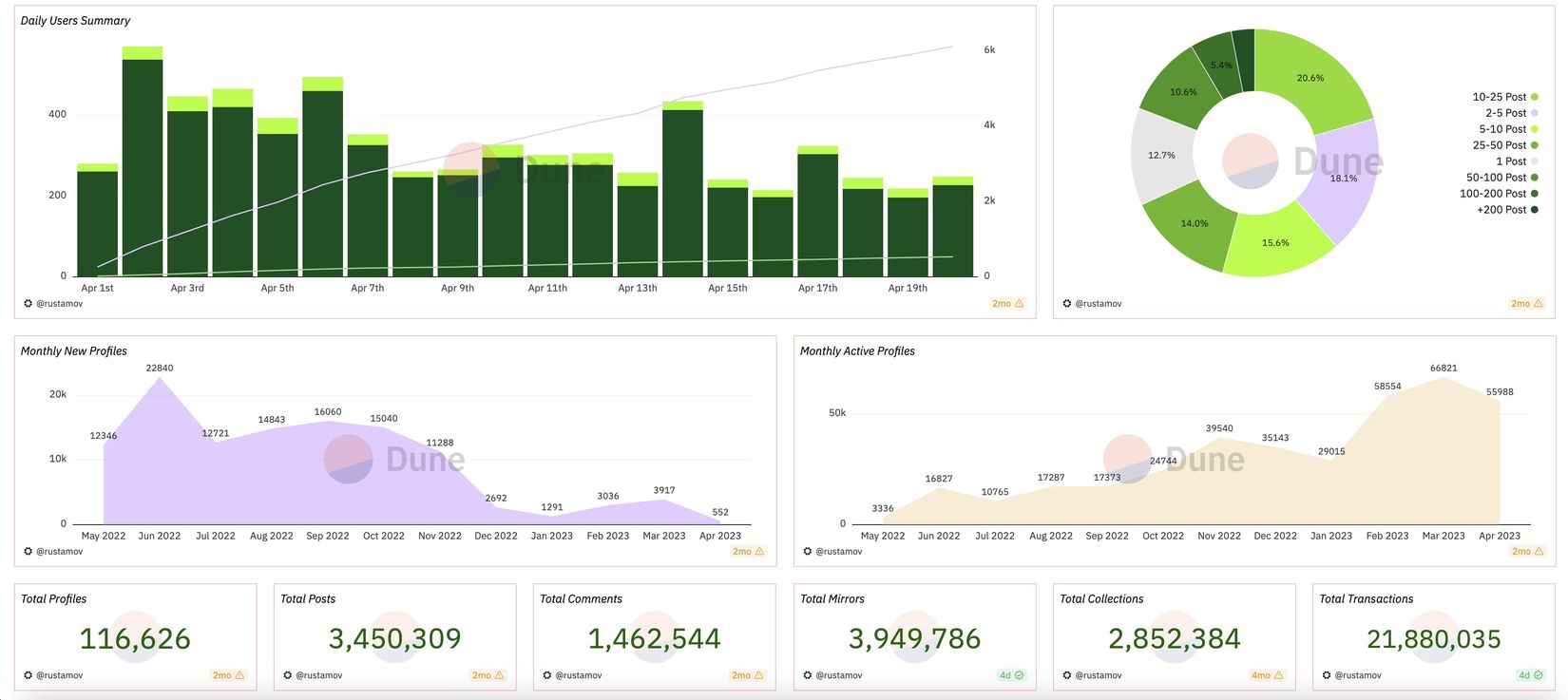
Image Description: Lens Data
Image Source: https://dune.com/rustamov/lens
After Lens was upgraded to Momoka, its various functions were decoupled, similar to the concept of modular blockchain. Lens data is hosted on Arweave for permanent storage and uses Bundlr as a data rollup tool. In nearly 500,000 transactions, the data storage service cost was less than $180, supporting the daily use of 6,000 users. The cost per transaction was less than $0.0004, enough to support large-scale promotion and use.
As mentioned earlier, social data requires complex classification and organization to reflect on-chain relationships, and then undergo data mining and organization for monetization and other complex operations. Arweave has reduced the cost of data storage to a range that most people can accept. Next, it is to unify and organize the data into a standard paradigm.
Content Monetization: $U and UDL
As McLuhan said, "the medium is the message." What truly makes an era great is not the content it spreads, but the use of the medium and the impact it creates. The couch potato of the TV era and the internet addict of the internet era are people's reactive responses to new media. If people use social media intensively beyond basic physiological needs, it is likely to be seen as a mental illness.
In fact, the current on-chain content creation, social products, and more mainstream applications such as DeFi and the Metaverse still have a very small share of the global market. During the peak of the 2021 blockchain bull market, when the global pandemic situation was not good, compared to that, there is still a very large development space for blockchain.
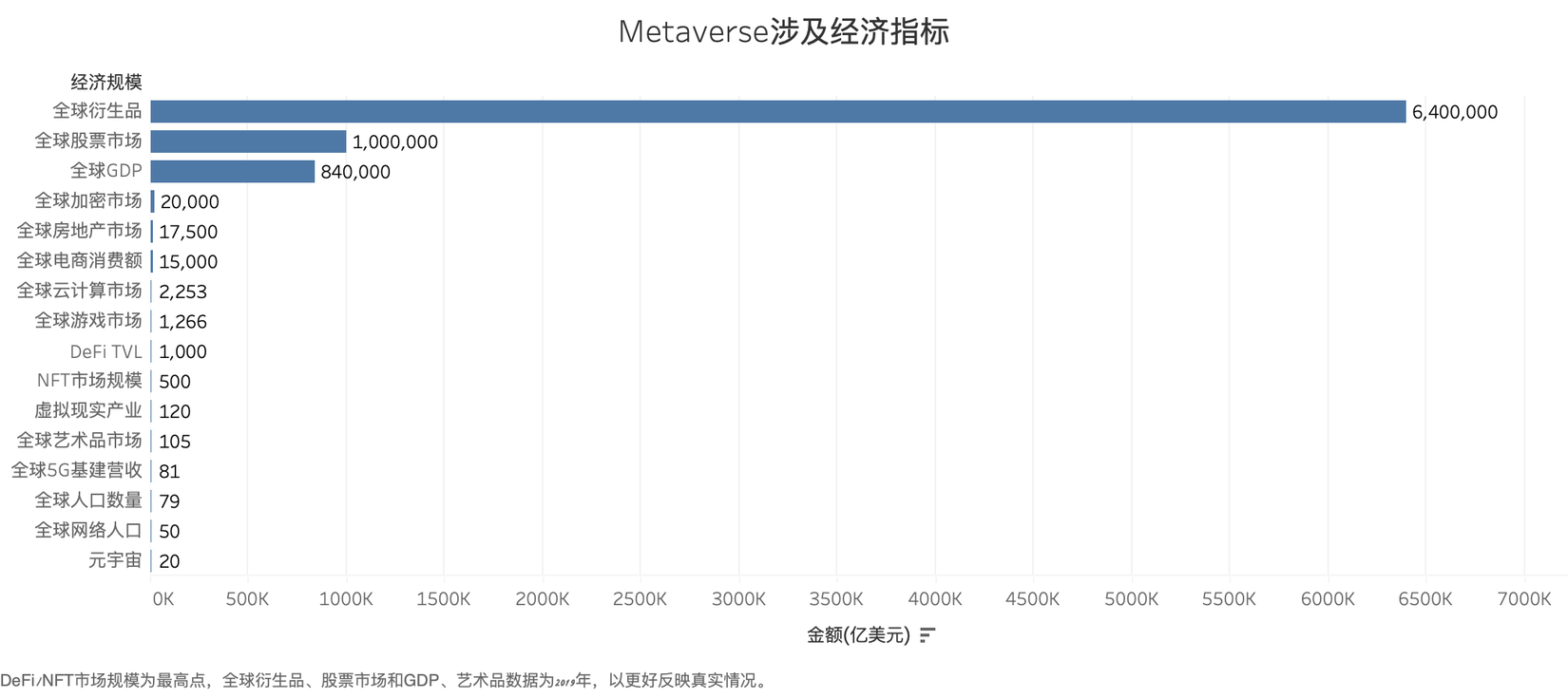
Image Description: Scale of Major Economic Indicators
Image Source: Arweave SCP Ventures
For the current Web3 creator economy, the main problem is the lack of channels for monetizing "content," which is not an exaggeration but a result of the current market size being too small. According to a report by BlockBeats, "Linktree reported that 66% of creators view online content creation as a side job, and 36% of creators have been creating content for less than a year. Among these early creators, only 6% earned more than $10,000, 35% of creators' income is not enough to make a living, and 59% have not monetized their content at all."
According to iResearch's statistics, "in terms of fan distribution, among creators operating personal accounts, the long-tail creators with less than 50,000 fans account for as much as 83.2%." These two points show that the current problem with the Web3 creator economy is the importance of traffic. Although traditional centralized platforms have many drawbacks such as monopoly, inequality, and privacy infringement, they can still capture traffic and support the prosperity of a content ecosystem.
But blockchain cannot adopt such methods, as it is technically unable to capture user data. Therefore, it is necessary to start from the incentive level to encourage more native creators, and this is where the cleverness of Arweave's $U token comes in.
$U is a token issued based on Smartweave, and its name comes from the abbreviation of Unit. The relationship between AR and U is similar to that of ETH and WETH. AR plays a role in paying storage fees within the ecosystem, but it lacks the ability to be called in smart contracts. $U will have greater generality and programmability, taking on the role of communicating with the Arweave developer ecosystem.
When users use AR to pay storage fees, they will automatically receive $U tokens in return, which can be directly traded, effectively providing users with a transaction fee discount. The more data users store and access, the greater the discount they receive, thereby encouraging active use from a production perspective.
In addition, the introduction of UDL is Arweave's direct solution for content monetization. Even on the blockchain, data portability is a major issue, with various cross-chain bridge accidents being a clear indication. The goal of UDL is to build a unified data protocol. As founder Sam said, "UDL allows users to embed programmable and legally effective licenses into any type of data uploaded to Arweave, generating continuous income from royalties."
When creating content, UDL can also be used to tag data to support users' subsequent data management work. UDL is not only effective for text and video, but theoretically, UDL can predefine programming for all types of data on Arweave.
Similar to various open-source licensing systems, UDL delegates permission management to users themselves and tracks and manages them uniformly through code, striking a balance between protecting content copyrights and maintaining an open world. Currently, UDL allows settings for replication, visibility, and public availability, as well as distribution management and whether it can be used for commercialization.
Conclusion
Starting from the current problems in the Web3 creator economy, this article focuses on reviewing the development process and current stage of the Web3 creator economy, and explores the reasons for the temporary silence of the creator economy through games and the Metaverse.
In the long term, the current problem with Web3 is that various infrastructure is still insufficient. Although there are practices like Mirror and Lens, they still have a large gap compared to traditional competitors. In the short term, there is no possibility of direct confrontation, and for the industry, it is still more experimental than practical.
But before more infrastructure is built, the most important thing is to have the right direction.
Arweave's approach is to start with the storage layer and then involve the protocol layer, taking steps with the adoption of Mirror and Lens, hoping to guide the way forward and illuminate the path to the next era.
References:
- The Passion Economy and the Future of Work
- Arweave Ecosystem Report: Creator Economy
- 2022 Internet Creator Economy White Paper
- Web3.0 Creator Economy Report: Development Status and Imagination Space of CreatorFi
- The Web3 Renaissance: A Golden Age for Content
免责声明:本文章仅代表作者个人观点,不代表本平台的立场和观点。本文章仅供信息分享,不构成对任何人的任何投资建议。用户与作者之间的任何争议,与本平台无关。如网页中刊载的文章或图片涉及侵权,请提供相关的权利证明和身份证明发送邮件到support@aicoin.com,本平台相关工作人员将会进行核查。




